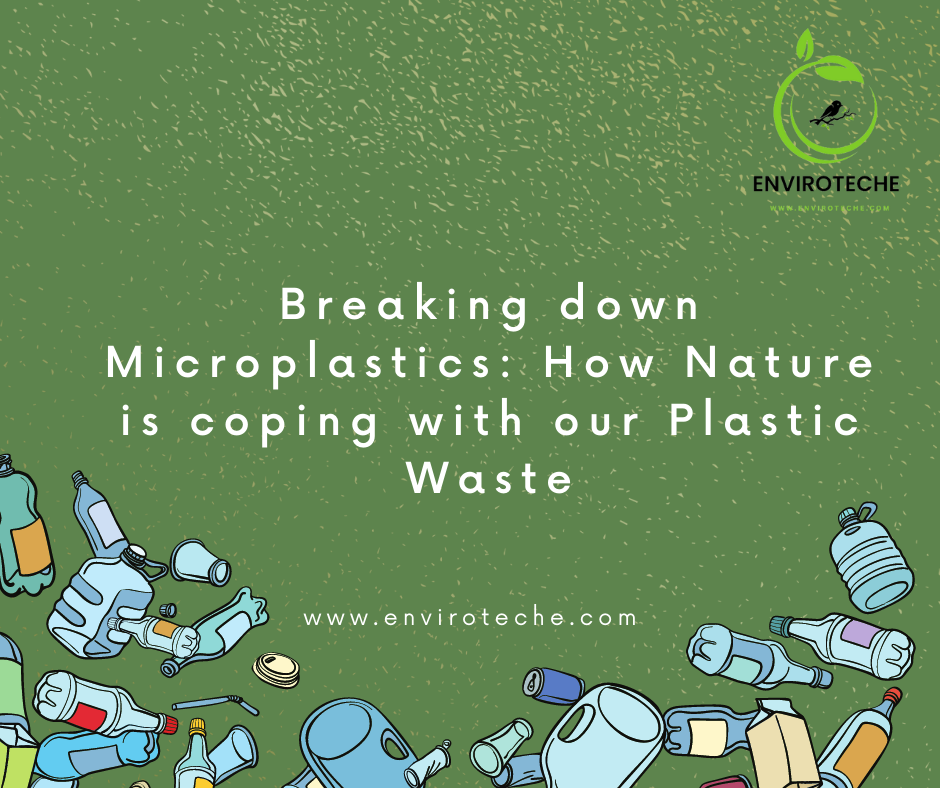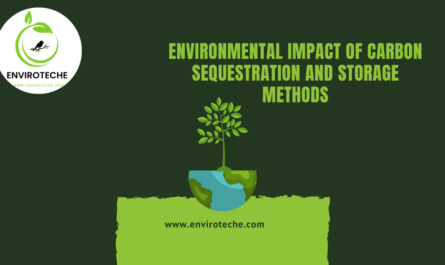
Qudrat Ullah1, Irfan Haidri1
1Department of Environmental Science, Government college university Faisalabad
Introduction:
Microplastics, which are tiny plastic particles less than 5 mm in diameter, are present in all areas of the environment, including soil, freshwater bodies, the ocean, food, and even the air (Chavarry et al., 2022). They can be produced either by the release of tiny plastic fibers from garments, carpets, and other synthetic textiles, or by the breaking up of larger plastic objects.
Due to their persistent nature, tendency to accumulate harmful compounds, and negative effects on both humans and wildlife, microplastics are a serious environmental and public health concern. According to studies, microplastics can affect marine species physically and chemically through entanglement, ingestion, and the transmission of poisons up the food chain. Microplastics have been found in humans’ food, water, and air, and some studies have found them to be potentially harmful to our health in the form of genotoxicity, oxidative stress, and inflammation.
In this article, we’ll look at how nature manages our plastic trash by dissolving microplastics and what people can do to lessen their detrimental effects. We’ll look at how persistent microplastics are, how they affect wildlife and ecosystems, and how organisms have evolved to ingest or decompose plastic. We will also talk about how people may reduce their use of plastic, manage their garbage better, and support sustainable alternatives.
The Persistence of Microplastics:
Plastic trash is a persistent environmental issue since it doesn’t biodegrade but instead fragments into tiny particles known as microplastics, which are smaller than 5 mm. Microplastics come from a variety of sources, including packaging waste, fishing nets, and other plastic products, clothing fibers lost during washing, and microbeads from personal care items like toothpaste and exfoliating scrubs. These tiny plastic particles can be found everywhere, including in our food, drinking water, soil, freshwater bodies, and the oceans.
Microplastics have reportedly been discovered in tap water, bottled water, beer, honey, and seafood, raising questions about their possible effects on human health. With an estimated 8 million metric tons of plastic entering the oceans annually and predictions indicating that by 2050 there may be more plastic in the ocean by weight than fish, the scope of the microplastic contamination problem is astounding (Sharma, Sharma, & Chatterjee, 2023). Finding ways to stop plastic pollution is urgent due to the persistence of microplastics in the environment and their potential effects on ecosystems and human health.
How Microplastics Affect Nature:
The health of ecosystems and wildlife are seriously threatened by microplastics. Microplastics can harm a variety of creatures, from zooplankton to whales, by obstructing their digestive processes and depriving them of nutrients. The survival and fitness of marine mammals, birds, and turtles can be impacted by getting entangled in plastic trash, which can result in drowning, asphyxia, and impaired movement and feeding.
In some species, microplastics can also interfere with immune systems, hormonal balances, and reproductive processes, potentially reducing rates of population increase and genetic diversity. Additionally, persistent organic pollutants, heavy metals, and microbial infections can be transported by microplastics and accumulate and biomagnifies in the food chain, providing health concerns to both people and wildlife.
By impacting the nutrient cycle, carbon sequestration, and oxygen generation of aquatic and terrestrial environments, as well as by altering the physical and chemical properties of soils, sediments, and water bodies, microplastics can also change how ecosystems function. Although their entire extent is still unknown, the long-term effects of microplastic pollution on the variety, resilience, and stability of natural systems are anticipated to be substantial and intricate.
How Nature is coping with Microplastics:
The capacity of nature to handle the growing burden of microplastic contamination is astounding. Numerous microorganisms, including bacteria and fungus, have developed the ability to break down or absorb plastics into simpler compounds that can be used for growth or energy. Some insects, including waxworms and mealworms, may also eat and digest plastics, opening up a potential new waste management strategy.
While several species of fish and birds have been documented consuming microplastics without obvious harm, marine worms and algae have been found to colonies and decompose plastic trash in aquatic habitats. The efficiency of biodegradation and bioremediation processes, which rely on the activity of these organisms to break down and detoxify microplastics, can be affected by variables like temperature, humidity, the availability of nutrients, and the chemical make-up and size of the plastic particles.
In order to combat microplastic pollution, scientists are also investigating the possibility of biomimicry and biotechnology, such as by creating enzymes or bio-based materials that mimic the natural processes of plastic disintegration in nature. These strategies show promise for effectively and sustainably tackling the microplastic pollution issue, but additional study and development are required to maximise their effectiveness and scalability.
The Role of Humans in Mitigating Microplastic Pollution:
Microplastic pollution is a serious environmental issue that needs to be addressed quickly and cooperatively by all facets of society. By taking both individual and group measures to cut back on plastic use, enhance waste management, and encourage circular economy solutions, humans can significantly lessen this problem. Simple actions like declining single-use plastics, carrying reusable bags and containers, and properly getting rid of plastic garbage can all be part of this.
In order to combat microplastic pollution, governments, business, and civil society must also take more ambitious and all-encompassing actions. Some of these actions include enacting laws to limit plastic production and consumption, funding research and development for biodegradable and environmentally friendly materials, and promoting sustainable waste management techniques.
However, there are obstacles and trade-offs involved in making the switch to a plastic-free world, including the requirement for behavioral modification, infrastructure upgrades, and economic adaptations. Therefore, in order to facilitate the shift to a more resilient and sustainable society that values the wellbeing of our planet and future generations, innovation, collaboration, and structural change are also required.
Conclusion:
In conclusion, microplastic contamination is a serious environmental issue that endangers ecosystems, public health, and the health of the economy. The permanence of microplastics, their detrimental impacts on the environment, and the potential for both natural and human remedies to lessen their effects have all been addressed in this blog post. Despite the fact that nature can manage some plastic waste, it is clear that humans must play a significant role in reducing plastic consumption, enhancing trash management, and supporting circular economy solutions.
We also recognise the need for innovation, teamwork, and systemic change as well as the difficulties and trade-offs involved in the transition to a plastic-free future. But we shouldn’t let the size and complexity of the microplastic pollution issue stop us from acting. Instead, it ought to motivate us to contribute to the international campaign to stop plastic pollution and build a more sustainable future for the world and ourselves.
We can make a difference and help create a cleaner, healthier, and more resilient planet by implementing little but significant changes in our daily lives, speaking up in favours of legislative and commercial solutions, and supporting community and grassroots projects. Let’s take responsibility for our actions right away to eliminate microplastics and create a better future.
References:
Chavarry, J., Law, K., Barton, A., Bowlin, N., Ohman, M., & Choy, C. (2022). Relative exposure to microplastics and prey for a pelagic forage fish. Environmental Research Letters, 17(6), 064038.
Sharma, S., Sharma, V., & Chatterjee, S. (2023). Contribution of plastic and microplastic to global climate change and their conjoining impacts on the environment-A review. Science of The Total Environment, 875, 162627.
Check Other Schlorships:

